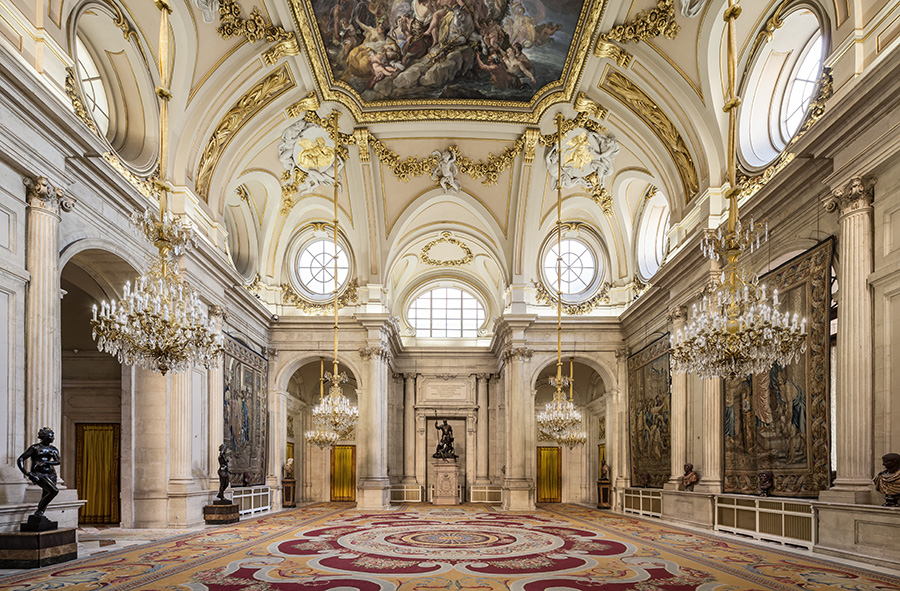Stirling is located in central Scotland, on the way to Loch Lomond and Trossachs National Park while Edinburgh and Glasgow are 60 Km (37 miles) and 42 Km (26 miles) far. Due to its strategic position, throughout the centuries Stirling has been considered the most important gateway to the Highlands so this explains the popular quote:
“Who holds Stirling, holds Scotland”.
For this reason some of the pivotal battles of the Scottish history took place here. Also Stirling Castle has been besieged several times over the centuries.
The top 8 things to see and do in Stirling
As the city is quite close to the Scottish capital and easily reachable by public transport (average travel time is 45 minutes), Stirling is the perfect destination for a day trip from Edinburgh. However, in my opinion Stirling would deserve more time in order to discover all its historical and cultural heritage.
For example – and please take this an another personal suggestion – you may spend one night at The Golden Lion Hotel. It’s situated in the city centre and less than a 10 minute walk from the railway station. Opened since 1786, it welcomed Robert Burns in August 1787 during his visit in town. He was deeply disappointed by the dilapidated state of the castle so he etched a verse on a pane of glass in his second floor bedroom:
“Here Stuarts once in glory reign’d, And laws for Scotland’s weal ordain’d ; But now unroof ‘d their palace stands, Their sceptre’s sway’d by other hands. The injur’d Stuart line is gone, A race outlandish fills their throne An idiot race, to honour lost : Who know them best despise them most”.
The scottish poet then returned in October and decided to smash that pane of glass with the butt of his riding crop.
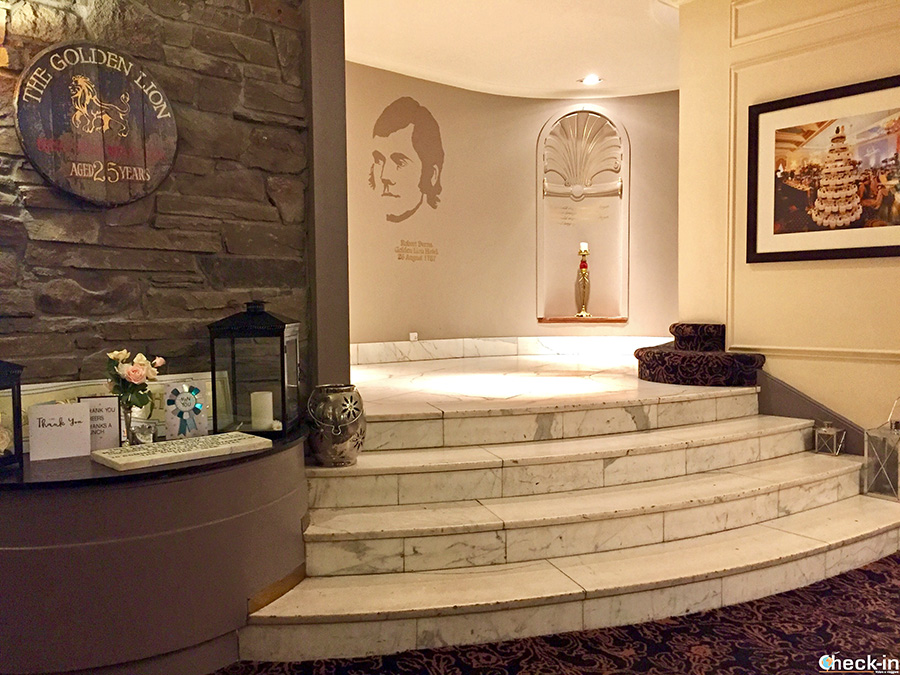
History, architecture, art and nature… Stirling has it all so this article intend to sum up the top 8 things to do and see in the city that used to be the capital of Scotland. Indeed, King Robert The Bruce held a Parliament here in 1326 and from then until the mid-16th century Stirling flourished as the castle became the regular residence for the Stuart Kings.
The full itinerary was accomplished in two days. Most of the attractions are located in and around the medieval citadel, whilst the others are well connected to the centre by bus.
What to visit in Stirling: 1) the Castle
Still today the fortress is the symbol of the Scottish independence and national pride. Like Edinburgh Castle, it sits on a high volcanic rock, visible for many miles in all directions. The building was first mentioned around 1100, though what we see today mostly dates back to 1496-1583. Many Scottish Kings and Queens were baptized, crowned and also passed away here, until the Union of the Crowns in 1603. Indeed, Stirling Castle used to be a Royal Residence from Alexander I – who became King in 1107 – to James VI, the son of Mary Queen of Scots and the first monarch to rule both the Kingdoms of Scotland and England.
The castle has been attacked or besieged at least 16 times over the centuries. This the reason why its defences were modified and expanded so many times until 1714, in response to the threat posed by the Jacobites.
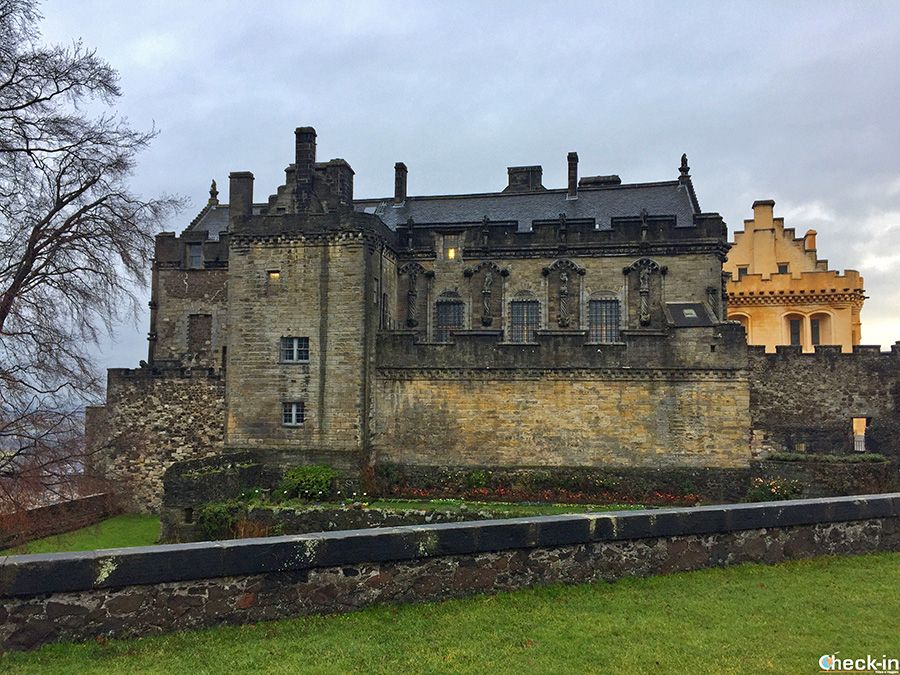
Having said that, most of the visit takes place in the “Inner Close”, a square surrounded by the royal buildings constructed between 15th-16th centuries.
The Great Hall was added by James IV around 1501-1504 and it’s the largest of this type ever built in Scotland. The building is easily recognizable thanks to the tint – King’s Gold – of its external walls that was recreated during the restoration work carried out since 1964.
The new Chapel Royal was commissioned by James VI in 1593 and it was completed in only 7 months, just in time for the christening of Prince Henry (30 August 1594). It was one of the first Protestant places of worship in Scotland as well as the last royal building to be built here.
The Royal Palace was ordered by James V but it was finished after his death in 1542. It’s considered one of the best preserved Renaissance buildings in UK. The “Stirling Heads” in the King’s Inner Hall are one of the most outstanding aspects of the original decor of the palace. These are 37 amazing carved wooden heads laids into the ceiling of that room. They represent real people, historical figures and mythical heroes as well. Many of this original artworks are showcased in the exhibition located on the upper floor of the building.
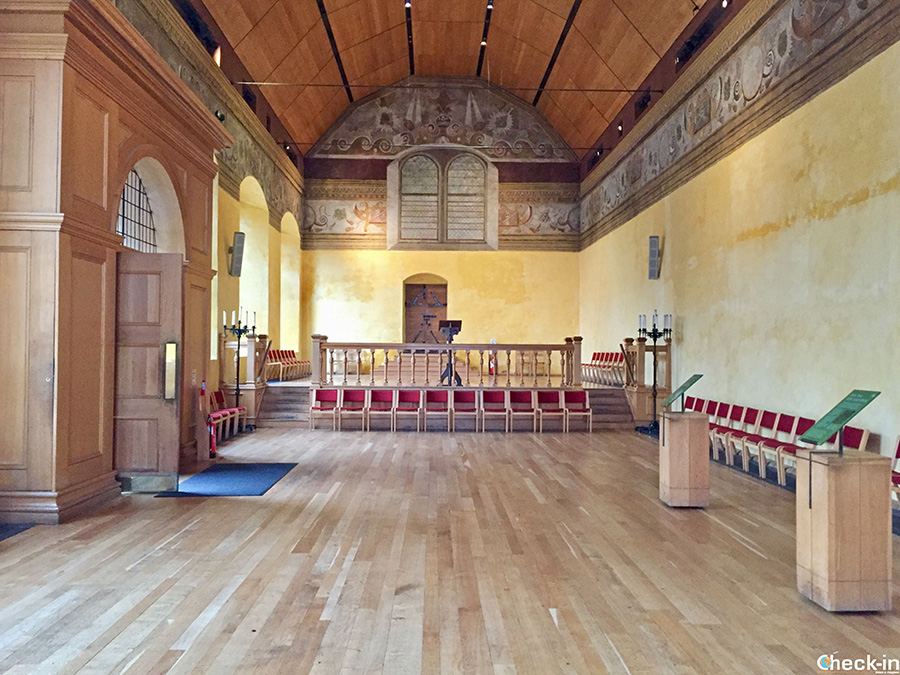
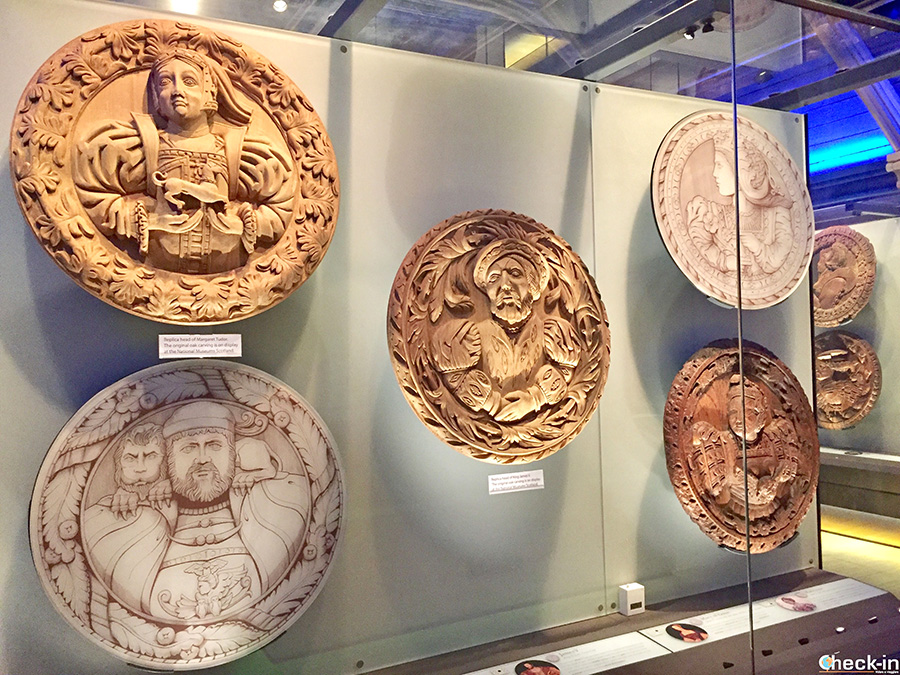
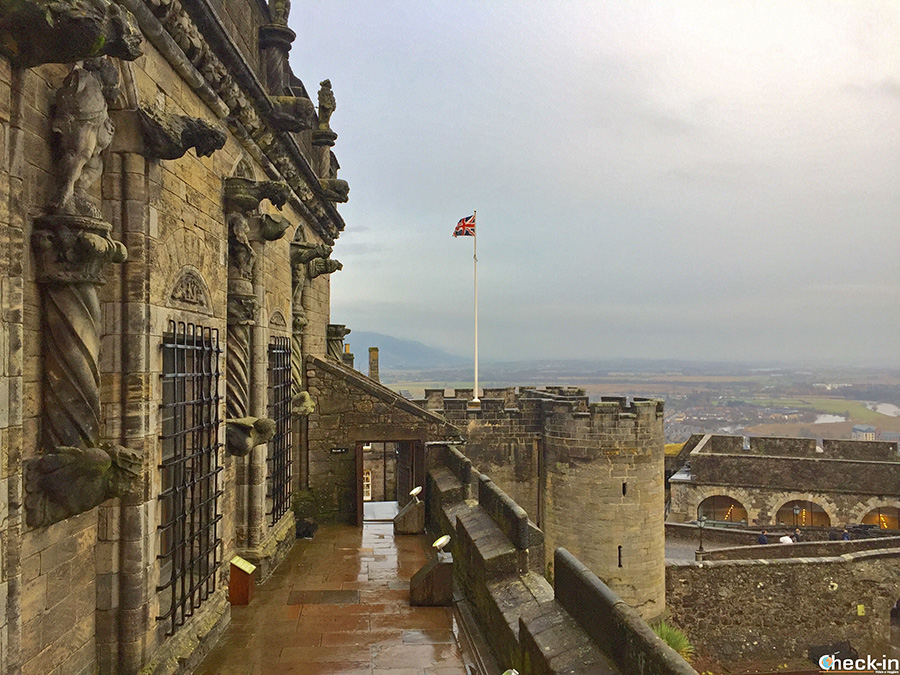
Allow yourself a couple of hours for the tour of the entire fortress, the Cafe and Shops are also available inside. Stirling Castle is one of Scotland’s most visited attractions and, especially in peak season, the average number of daily visitors is relevant. For this reason I recommend you to purchase your ticket online in order to skip the queue. A free guided tour is also available, it lasts around 30 minutes and it starts every hour. Please note that Stirling Castle is one of the historical sites – together with Edinburgh Castle, Linlithgow Palace, Blackness and Urquhart Castle and so on – included in the Historic Scotland Explorer Pass.
What to see in Stirling: 2) the Old Town
Located on the castle esplanade, the statue dedicated to Robert The Bruce commemorates one of Scotland’s greatest heroes. The monument stands on a very panoramic spot over the city, with stunning views across River Forth and the National Wallace Monument.

Leaving the fortress behind us, the cobbled street leads in the heart of Stirling Old Town, rich of valuable historic buildings. Argyll’is Lodging is considered one of the best examples of civil architecture from the 16th century, unfortunately currently it’s not open to the public (December 2019). Mar’s Wark was another building from the 16th century and the Earl of Mar lived here until the end of the 17th century. He was one of the richest and most powerful men of the country and he was elected indeed Guardian of the infant King James VI of Scotland. Then, in 1715 the house was converted into barracks to welcome Jacobite supporters and it was destroyed during the Rebellion of 1745.
Few steps away, the Church of the Holy Rude is one of Scotland’s most important medieval churches. King James VI was crowned here in 1567 and for this reason it claims to being the only active church in the United Kingdom – apart from Westminster Abbey – to have held a coronation. The old cemetery is a unique viewpoint over Stirling Castle.
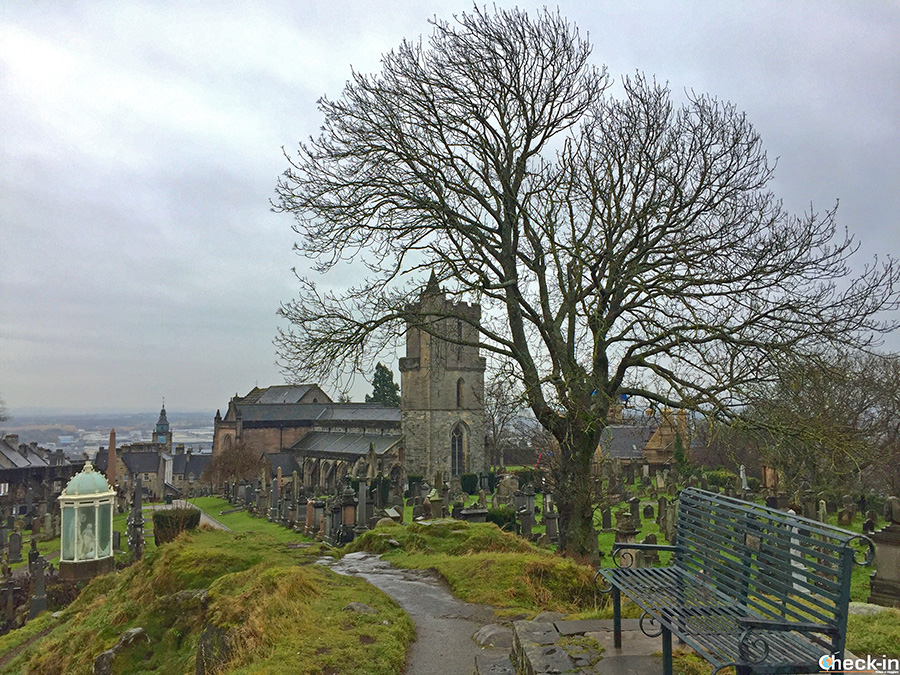
What to visit in Stirling: 3) Smith Art Gallery and Museum
Opened in 1874 at the bequest of artist Thomas Stuart Smith (1815-1869), the Smith Art Gallery and Museum is a Victorian building overlooking Albert Square. It houses more than 40.000 artworks and objects celebrating local people, heritage and culture.
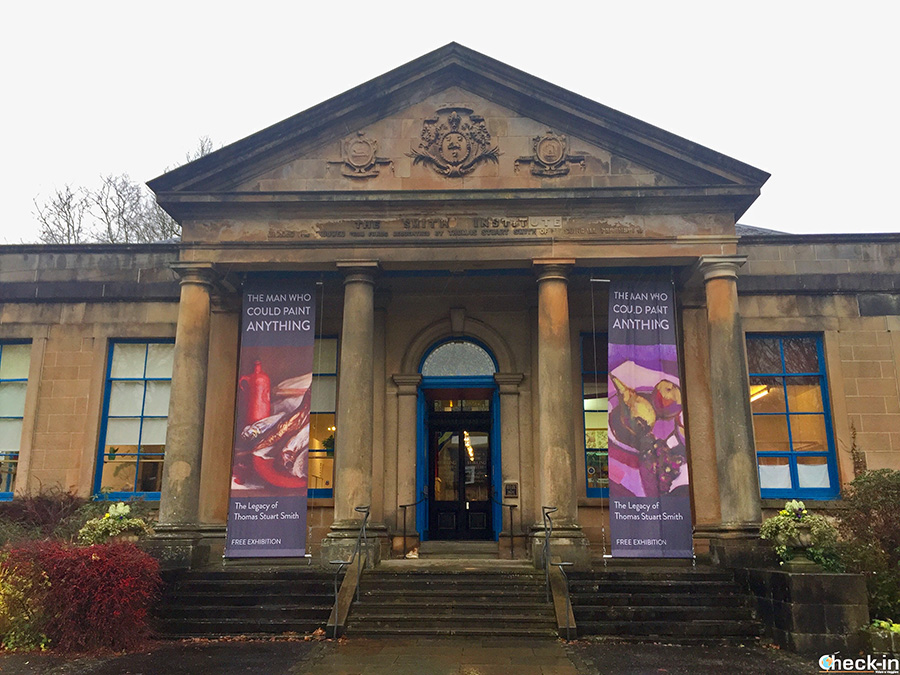
Galleries 1 and 2 host temporary exhibitions while the Gallery 3 is focused on the rich cultural history of Stirling and Stirlingshire as well. You may also find out more about the world’s oldest football. The museum runs an event programme over the year, including children’s activities, talks and lectures. Admission is free.

What to see in Stirling: 4) Kings Park
Once used as the hunting ground for the Royal Court, today Kings Park is a very popular destination for families, walkers and golf players. So facilities include skate park, play area for all ages, outdoor gym equipment, tennis and golf courts, coffe and ice cream kiosk (during summer months), picnic tables and seating, The area also offers beautiful views of the castle on the horizon.

King’s Knot stands next to Kings Park, at the base of the castle rock. The ground was property of the Crown from at least the 1100s as it was used for jousting, hawking and hunting. This octagonal garden, made of stepped turf and a central grassy mound, it’s linked to King Arthur. Indeed, according to some texts from 15th-16th centuries it seems that his Round Table was at Stirling Castle.
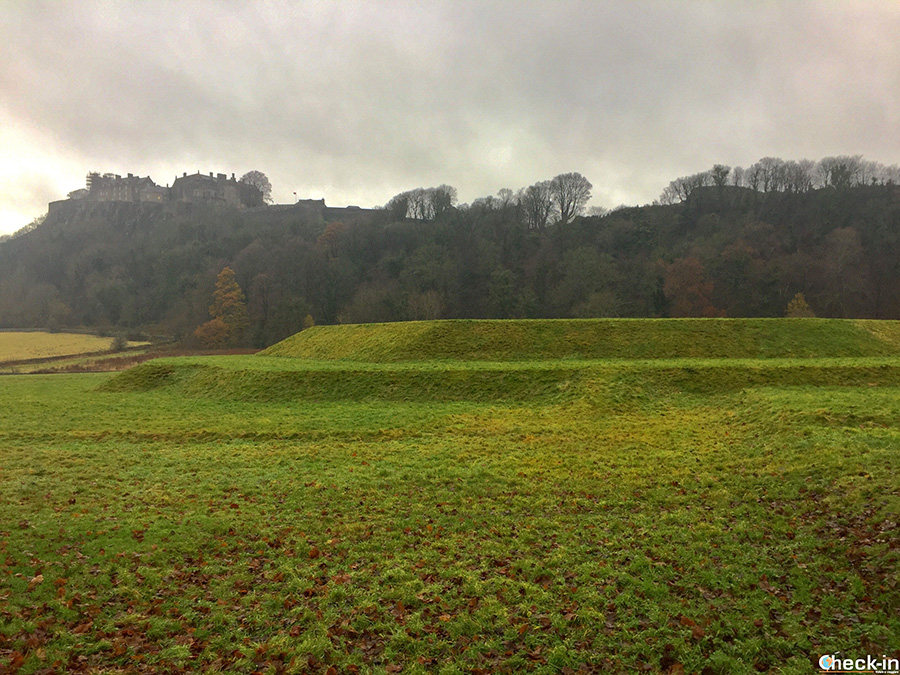
What to see in Stirling: 5) Gowan Hill and Old Stirling Bridge
The scenic walk along the old town walls continues on Back O’ Hill Road and then on Lower Bridge Street, arriving in front of Gowan Hill. Another path leads to Mote Hill, a little bit lower but very interesting for the local history. On the top of it there’re two cannons and the beheading stone. This one was used for many executions during the 15 century and it makes the hill quite a spooky place…
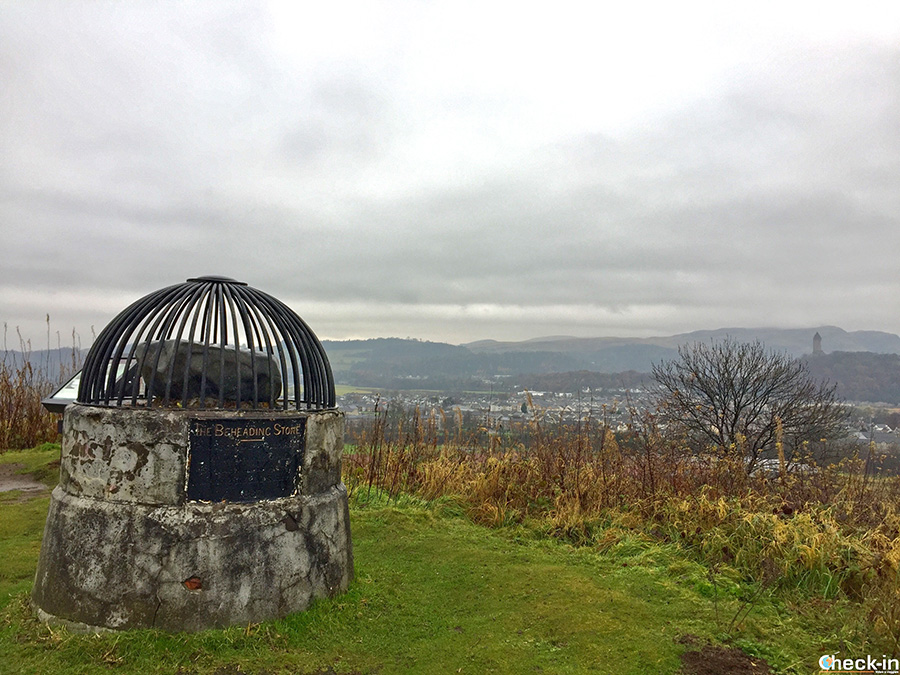
Back to town and walking towards the River Forth you can spot the Old Stirling Bridge. This is definitely an iconic place to see as it represents a crucial event of the scottish history. The one we see today dates back to 15th-16th centuries and it was built to replace a succession of timber bridges.
The best-known is undoubtedly the one that stood when William Wallace and Andrew Moray defeated the English troops led by Edward I at the famous Battle of Stirling Bridge in 1297. Later, another event took place here. During the Jacobite Rising of 1745 the British Government troops removed an arch as a way to prevent Bonnie Prince Charlie’s forces to march south.

What to see near Stirling: 6) Cambuskenneth Abbey
To the east of Stirling a small footbridge links the village of Cambuskenneth to the city centre. Though both areas are quite close, the River Forth flows between them ensuring a sense of separateness.
The name derives from Kenneth MacAlpin, the future first King of Scots who defeated the Picts in this area in the 9th century. This pivotal event then determinated the foundation of the Kingdom of Alba.
The Cambuskenneth Abbey is one of Scotland’s most important abbeys and it was founded by King David I in 1140. During the Scottish Wars of Independence Robert Bruce held here the first Scottish Parliament. King James III and his Queen Margaret of Denmark were buried in front of the high altar of the church. Much of the building was destroyed during the Scottish Reformation and now ony the bell tower and some ruins are still visible.

What to visit near Stirling: 7) National Wallace Monument
The Wallace Monument is located on the top of the Abbey Craig, on the outskirts of Stirling. This national landmark is dedicated to Sir William Wallace and here you can find out more about his life and legacy. It was built between 1861-1869 and it’s 67 m high, offering stunning panoramic views from the Crown (on the top of the monument). This place is supposed to be the viewpoint used by the scottish hero ahead of the Battle of Stirling Bridge fought on the 11th September 1297.
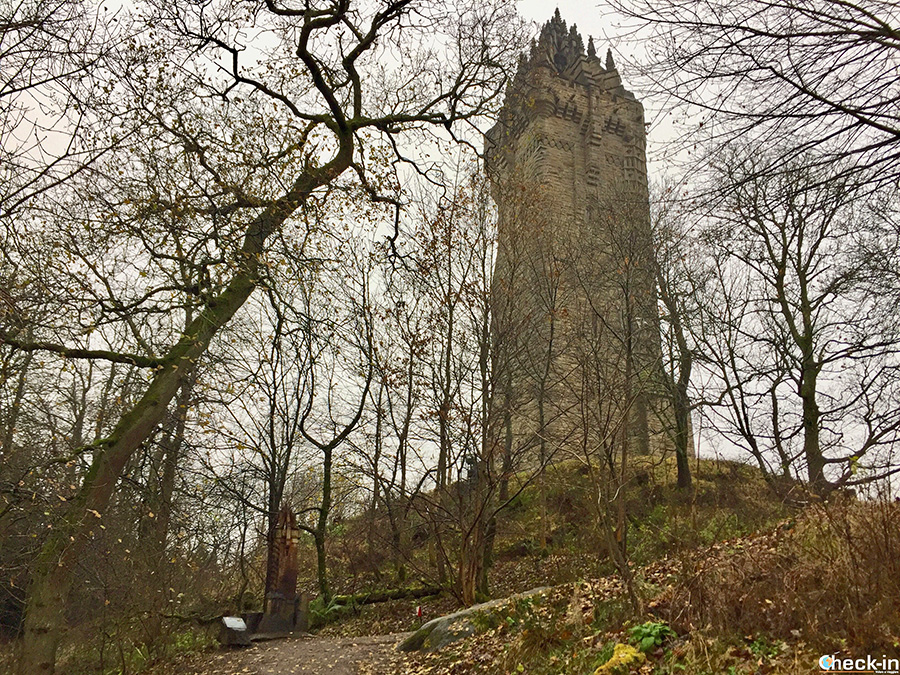
The tower is divided into three levels, only accessible via a spiral staircase:
- the Hall of Arms is focused on the Battle of Stirling Bridge and here the legendary Wallace’s sword is on display since 1888;
- the Hall of Heroes hosts around 30 busts of women and men that made their mark on the story of Scotland;
- the last area tells the story of the Wallace Monument and its surroundings, visitors can also design their Coat of Arms and get a picture of them.
The Visitor Centre is situated at the bottom of the hill and courtesy minubus service connects it to the monument. Otherwise, you can reach the top of Abbey Craig following the path across the woods (20-30 minutes).
Regular bus services 51-52 operated by First Scotland East depart from Stirling centre – opposite the Railway Station – and stop in front of the Car Park, which is free for visitors.
More information are available on nationalwallacemonument.com.
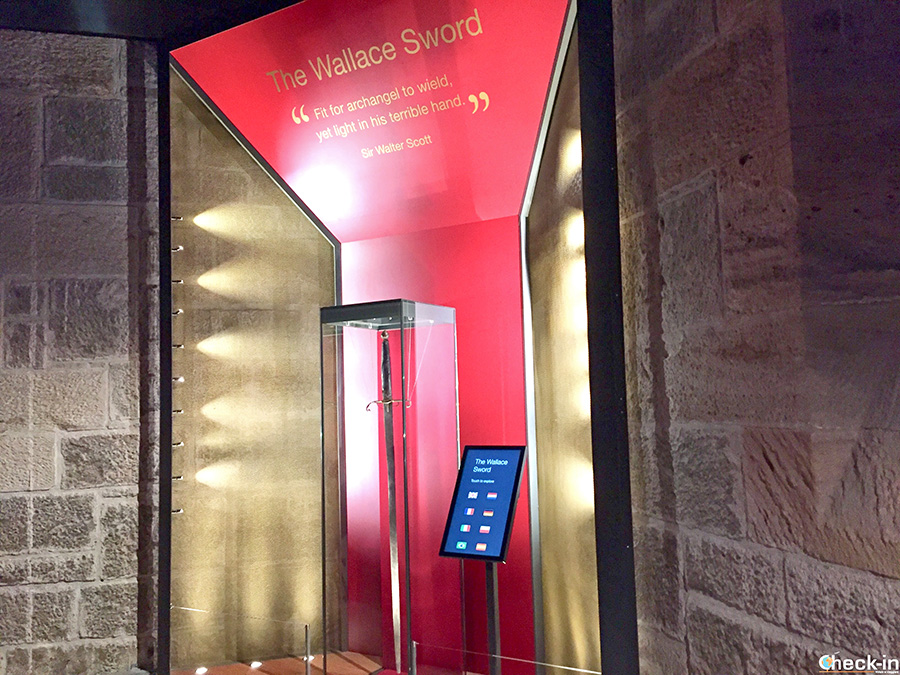
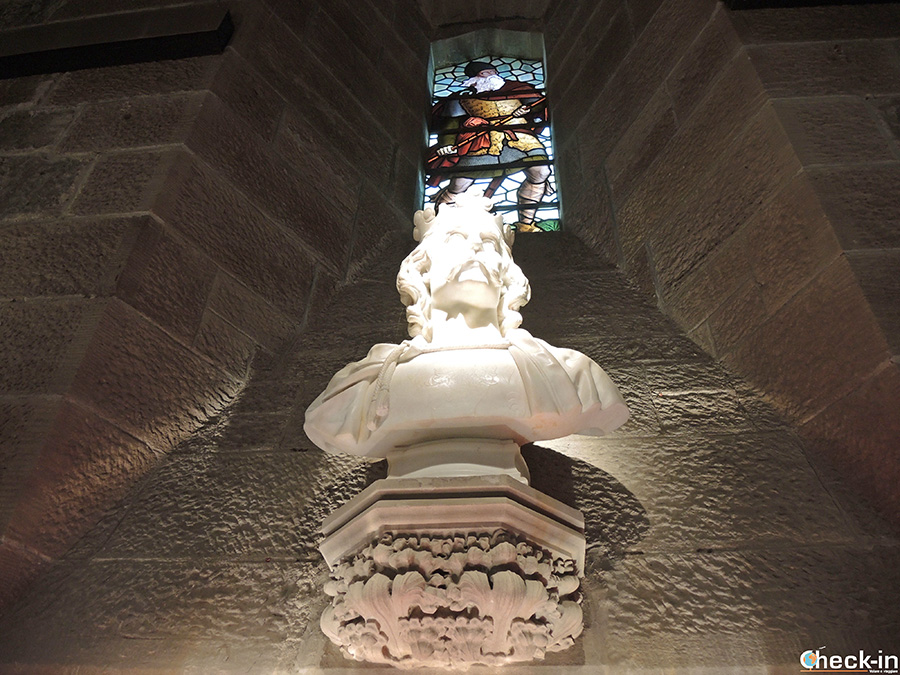
What to visit near Stirling: 8) Battle of Bannockburn Experience
Located 2 miles south of Stirling, the Battle of Bannockburn Visitor Centre is a modern structure built just few meters away from the battlefield. There, Robert Bruce’s army fought against the troops led by King Edward II on 23rd and 24th June 1314. It was the most famous Scottish victory during the Wars of Independence, especially because the English should have won quite easily as they had more men and better equipment.
The Battle of Bannockburn Experience brings this chapter of Scotland’s story to life thanks to a fully-immersive 3D technology. Indeed, visitors take command of their own virtual battlefield to re-create the combat. Entry is by pre-booked time slots, specially during holiday periods.
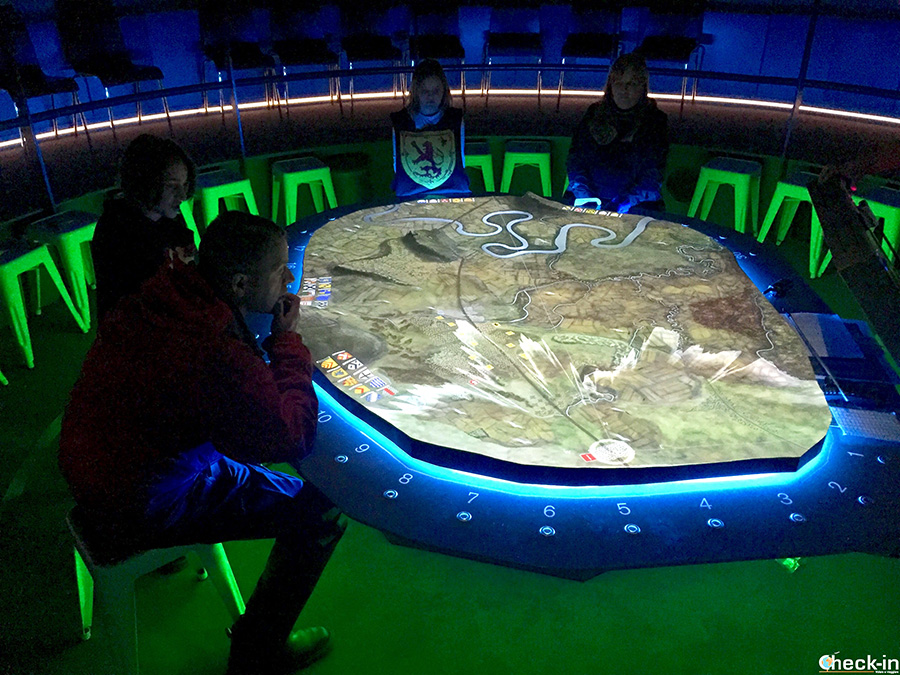
Outside the centre there’s a memorial park also including the iconic shimmering bronze statue of Robert the Bruce that was installed to mark the 650th anniversary of the battle:
“We fight not for glory nor for wealth nor honours; but only and alone we fight for freedom, which no good man surrenders but with his life.”
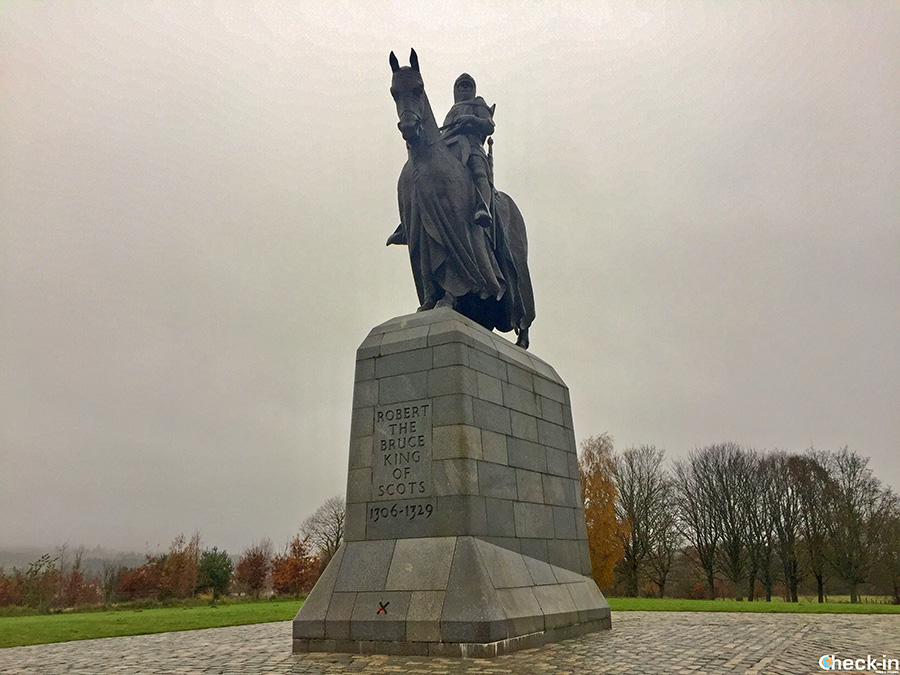
The entire historical site is cared for by National Trust for Scotland and all the information related to it and the battle of Bannockburn Experience are available on its website. Regular bus services X36/51 operates between Bannockburn and Stirling city centre, for more details please check Traveline Scotland.



